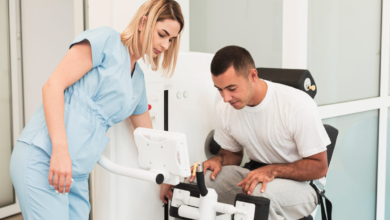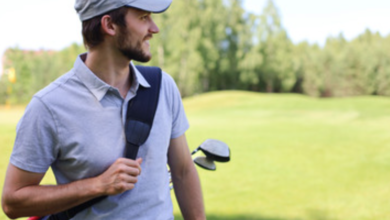How Often Should You Clean Baby Toys?

Babies explore the world by putting everything in their mouths, making toys a hotspot for germs. From drool to food residue, toys collect bacteria quickly, increasing the risk of infections. Studies show that unwashed toys can harbor harmful pathogens like E. coli and influenza viruses. For parents, keeping toys clean isn’t just about tidiness—it’s a crucial step in protecting their child’s health. Regular cleaning also extends the lifespan of toys, preventing mold in bath toys or discoloration in plastic ones. But how to clean baby toys? The answer depends on the toy type, usage, and your baby’s habits. In this article, we’ll break down the best cleaning practices to ensure a safe play environment.
Cleaning Frequency by Toy Type
Daily Cleaning: Pacifiers, Teethers & Bath Toys
Pacifiers and teethers go straight into your baby’s mouth multiple times a day, making them a top priority for daily cleaning. Rinse them with hot water after each use, and sanitize them weekly by boiling for 5 minutes. Bath toys, often left damp, develop mold inside if not dried properly. Squeeze out water after each bath and rinse them with vinegar weekly to kill hidden mildew. For example, a rubber duck left wet for days can turn black inside—a sign of dangerous mold growth. Similarly, silicone teethers collect saliva and food particles, which attract bacteria. A quick wash with soapy water at the end of the day keeps them safe.
Weekly Cleaning: Plush, Plastic & Wooden Toys
Stuffed animals and fabric toys pick up dust, crumbs, and germs from floors and little hands. Toss them in the washing machine weekly using a gentle cycle and mild detergent. For plastic and wooden toys, wipe them down with a damp cloth and soapy water. Wooden toys need extra care—avoid soaking them to prevent warping. If your baby chews on a plastic rattle daily, it’s wise to clean it more often. A weekly routine ensures these toys stay hygienic without over-cleaning, which could damage materials.
Monthly Deep Cleaning: Electronic & Hard-to-Wash Toys
Battery-operated toys can’t be submerged, so use a disinfecting wipe or a cloth dampened with rubbing alcohol to clean surfaces. Pay attention to crevices where dirt accumulates. For toys with sticky buttons or grime buildup, a cotton swab dipped in soapy water works well. Hard-to-clean toys, like large activity centers, benefit from monthly deep cleaning. Check manufacturer guidelines to avoid damaging sensitive parts.

Safe Cleaning Methods for Different Materials
Non-Toxic Solutions for Plastic & Silicone Toys
Harsh chemicals like bleach can leave harmful residues. Instead, mix warm water with mild dish soap or baking soda for a safe scrub. For disinfecting, use a vinegar-water solution (1:1 ratio) or hydrogen peroxide spray. Rinse thoroughly to prevent skin irritation. For instance, a silicone teether washed with soap and then soaked in vinegar water stays germ-free without risking your baby’s health. Always air-dry plastic toys completely to prevent moisture buildup.
Gentle Washing for Stuffed Animals & Fabric Toys
Check labels for washing instructions—most plush toys survive a machine wash in a pillowcase (to protect shapes). Use fragrance-free detergent to avoid irritating sensitive skin. For delicate toys, hand-wash in cold water and air-dry in sunlight, which naturally kills bacteria. If a stuffed bunny gets dragged through mud at the park, pretreat stains with baking soda before washing. Sun-drying also helps eliminate odors. Always ensure that toys are completely dry before giving them back to your child to prevent mold growth. Additionally, consider rotating toys to reduce wear and tear, allowing some to rest while others are in use.
Disinfecting Without Harsh Chemicals
Steam cleaners are excellent for sanitizing without chemicals, especially for wooden or electronic toys. For a DIY approach, mix 3% hydrogen peroxide with water in a spray bottle—effective against viruses yet safe once dried. Avoid aerosol sprays near toys; fumes can linger. Instead, opt for natural disinfectants like lemon juice for light cleaning. Regularly disinfect high-touch areas of toys, such as handles and buttons, to maintain hygiene. Furthermore, ensure proper ventilation when using any cleaning solution to keep the air fresh and safe for your child.
Special Cases: Illness, Drooling & Outdoor Toys
During cold season or if your baby is sick, clean toys daily to prevent reinfection. Drooled-on toys (like chew beads) need rinsing after each use. Outdoor toys, exposed to dirt and germs, should be hosed down weekly and disinfected monthly. Sandbox toys, for example, collect bacteria from soil and pets. Soak them in hot, soapy water before storing. Additionally, consider using non-toxic disinfectants to ensure safety for your child. Regularly inspect toys for wear and tear, as damaged toys can harbor more germs.
Conclusion
Ultimately, consistency is what makes the difference. A well-maintained toy collection means fewer germs, longer-lasting playthings, and peace of mind for parents. By incorporating these habits into your routine, you’re not just cleaning toys—you’re actively contributing to your baby’s health and happiness.




